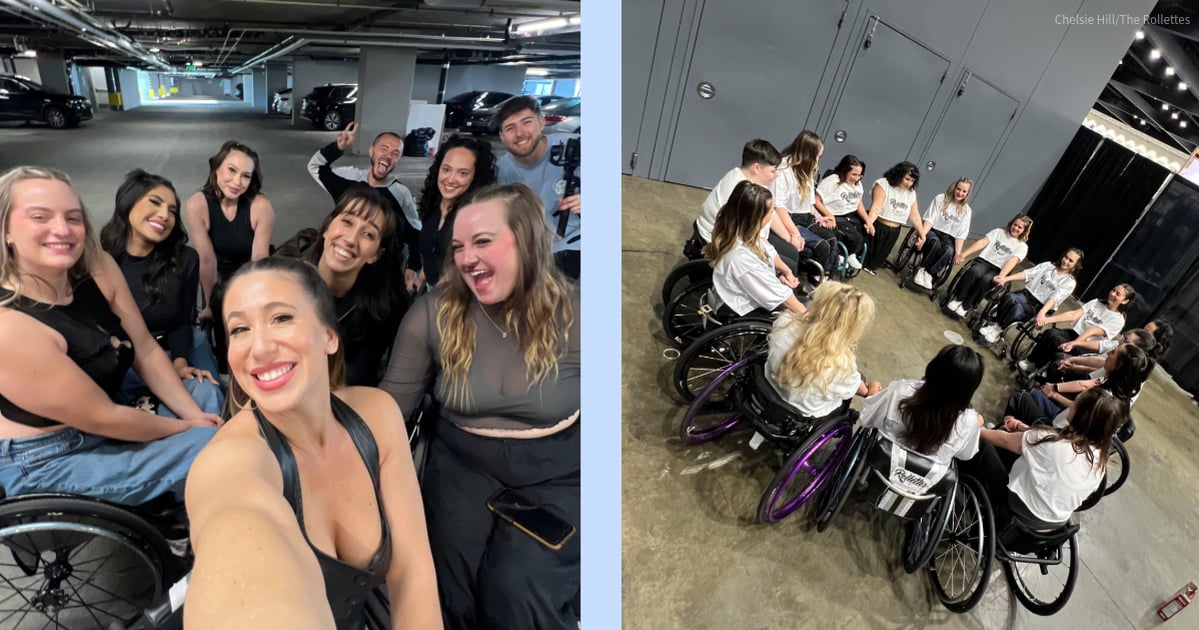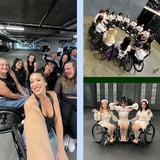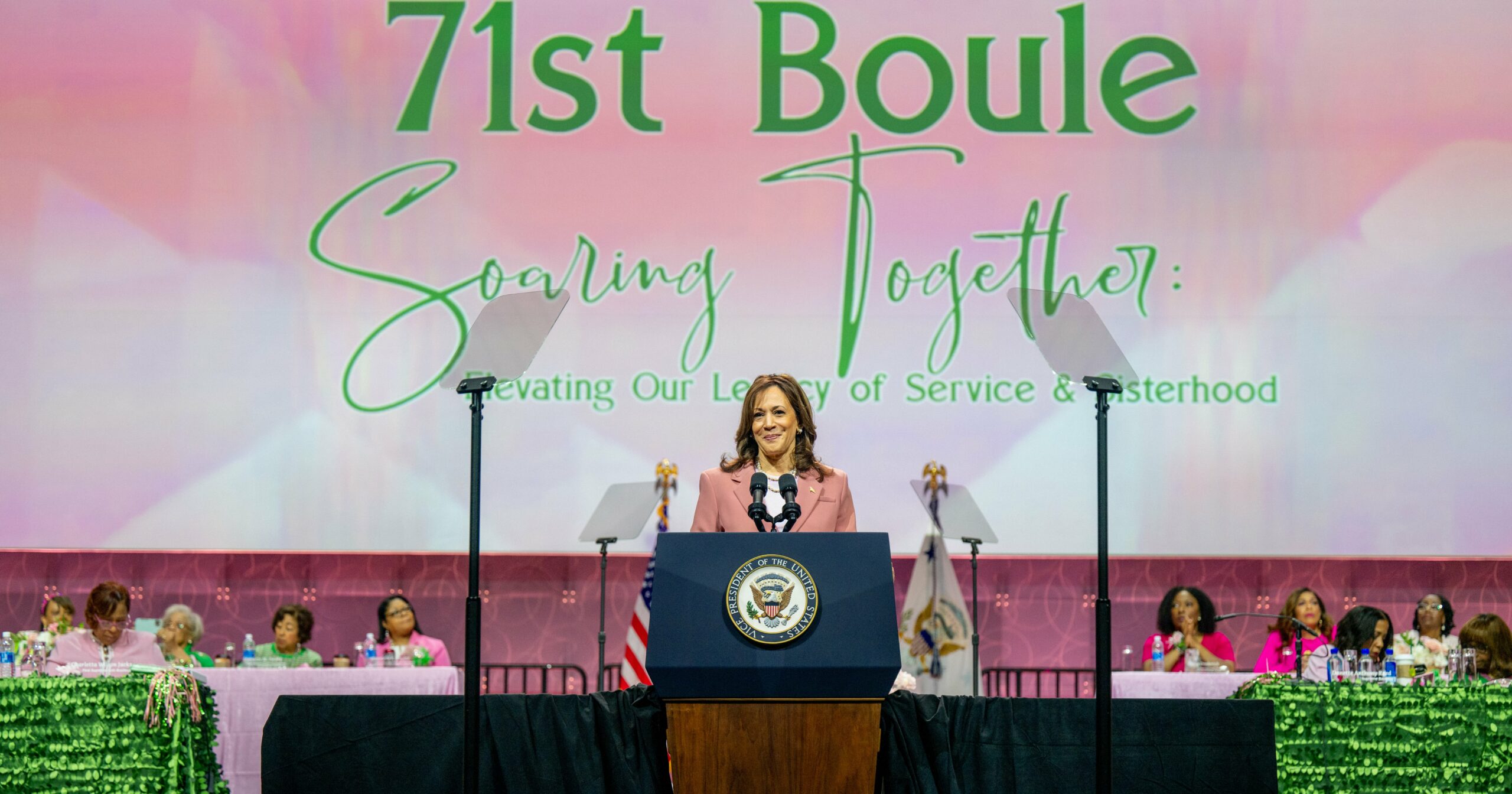Dancers know they’re being judged . . . most of the time. But the commentary doesn’t always end when the curtain drops. Scrape through a few layers of glitter hairspray and Ardell Wispies, and you’ll find yourself facing an uncomfortable truth: the majority of dancers gracing your FYP look the same. And oftentimes, the parameters for this virality (or success in general) transcend pointed toes and straight legs. They require you to be able-bodied.
It’s a pain Chelsie Hill knows all too well. In February of 2010, a car accident left Hill with a spinal cord injury that paralyzed her from the waist down. As a trained dancer, she felt this loss felt especially deeply, but she wasn’t willing to abandon her passion . . . even if she didn’t know where to start. “When I was first injured, there was no competition platform for people with disabilities,” Hill tells Popsugar. “I looked online and I was like, ‘I don’t see a lot of wheelchair dancers.'” In an effort to change that, Hill started inviting other wheelchair users to dance with her. In doing so, she created a movement greater than she ever anticipated.
The Origin Story
At first, it was just a group of six girls from all over the US, and they decided to call themselves the Rollettes. “We had sleepovers, we were rolling around Target, we were rolling around my hometown,” Hill says. Having felt this joy, it was tough to go back to navigating the LA dance scene.
“I left crying because I didn’t feel like I belonged.”
“People literally would look at me and be like, ‘What is she doing here?'” Hill says. “The first time I went to a really big studio out here [in LA], it was 2014, and I left crying because I didn’t feel like I belonged. I felt like everyone was staring at me. I felt like people were wondering why I was there.”
Leaving class, Hill knew she never wanted to feel that way again. So she started expanding her invites and posting more dance videos on social media (once racking up 7 million views within 24 hours). Conner Lundius, current dance team captain for the Rollettes, remembers how the group reached her all the way in southern Illinois with a YouTube dance tutorial.
The call to action was simple: learn the choreography, share yourself trying it, and tag Hill in the post. “I decided to try, and I posted it on my Instagram account, and they found me through a hashtag,” Lundius tells Popsugar. She then drove five hours to attend an in-person Rollettes event in Chicago. At the time, she was one of 15 wheelchair dancers. Now, nearly 300 people attend this annual event, called the Rollettes Experience.
Community Moves Us
Lundius stayed close with the Rollettes, accepting a part-time role in 2017 and coming out to LA every now and then to help as best she could. But in 2019, inspired by the community, Lundius took the plunge and moved to LA for good. “My hometown is 300 people,” she says. “I don’t feel normal sometimes. But when I’m with the community I know and love, life is second nature, and I feel like you don’t get that out in the world as a disabled person without those people supporting you.”
This speaks to Hill’s original hope: to cultivate a space where people of all ages and disabilities could unite and take up space without fear of judgment. “I wanted to build a community where I felt . . . I guess you could say ‘normal.’ Whatever that means these days,” Hill says.
Dance Belongs to Everyone
Hill and Lundius agree that their relationship with dance has evolved since their spinal cord injuries – but that’s not necessarily a bad thing. “[The wheelchair] becomes more of a tool when I’m choreographing,” Lundius explains. That said, a lot goes on behind the scenes. A clean routine means carefully planning out spacing, considering the size of every dancer’s wheelchair, and thinking about how quickly everyone can move.
Since 2012, the Rollettes have traveled to Italy, performed at World of Dance, and danced in a Boston Celtics halftime show. Lundius remembers the halftime show in particular, saying the Celtics dancers (all of whom are able-bodied) joined the Rollettes for the last 30 seconds of the show. “What they were doing was exactly what I had pictured in my head – the choices they made to translate and complete the movement with their full body, versus what I had given the Rollettes as seated dancers,” she says.
For Lundius, it was an emotional moment, proving just how powerful dance really is. “You’re on the same level, the same playing field. You’re all experiencing the same choreography, but maybe feeling different things,” she says. “I think that’s why I love dance so much – because anyone can do it.”
Chandler Plante (she/her) is a social producer and staff writer for the Health & Fitness team at Popsugar. She has over five years of industry experience, previously working as an editorial assistant for People magazine, a social media manager for Millie magazine, and a contributor for Bustle Digital Group. She has a degree in magazine journalism from Syracuse University and is based in Los Angeles.



